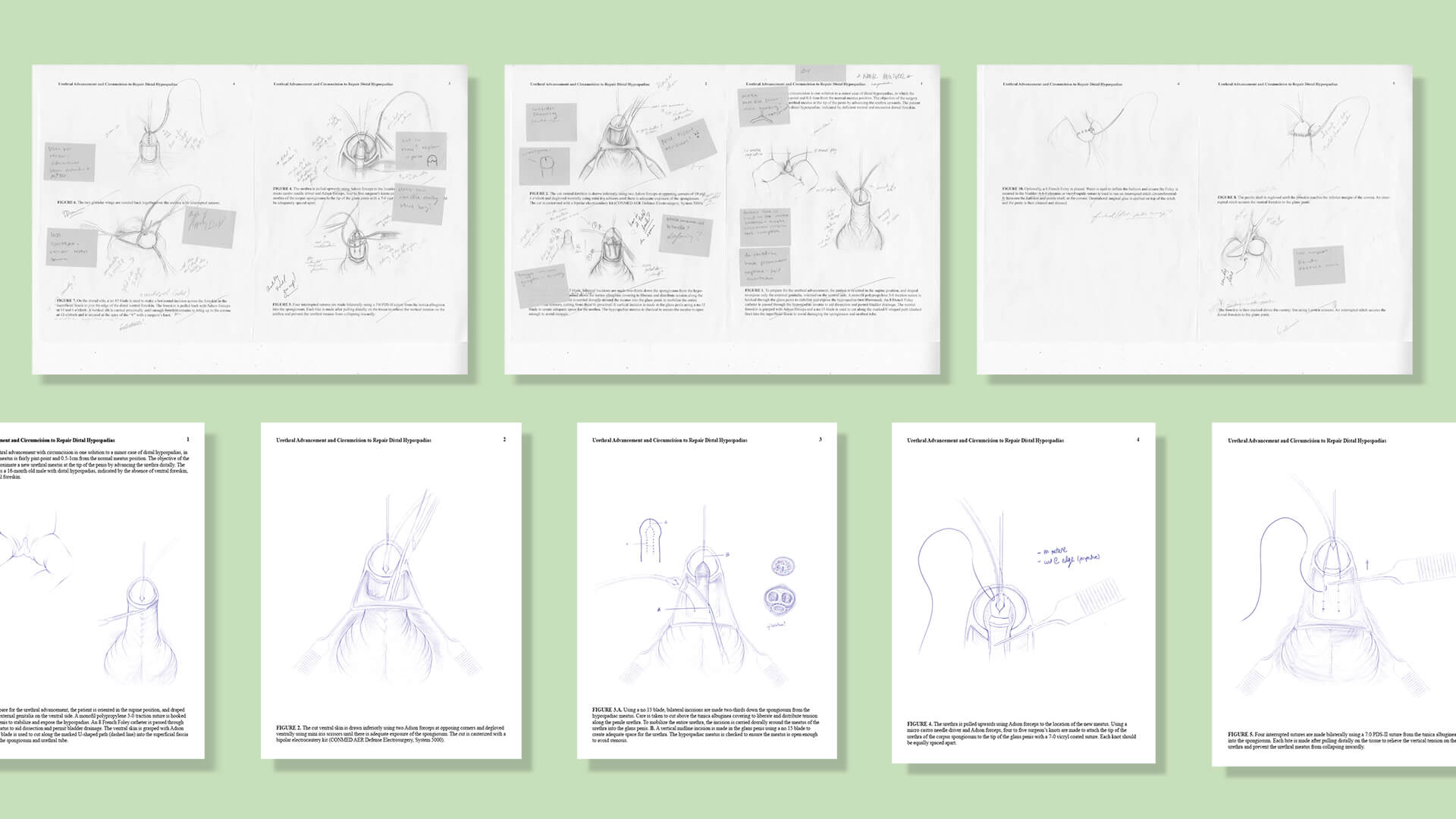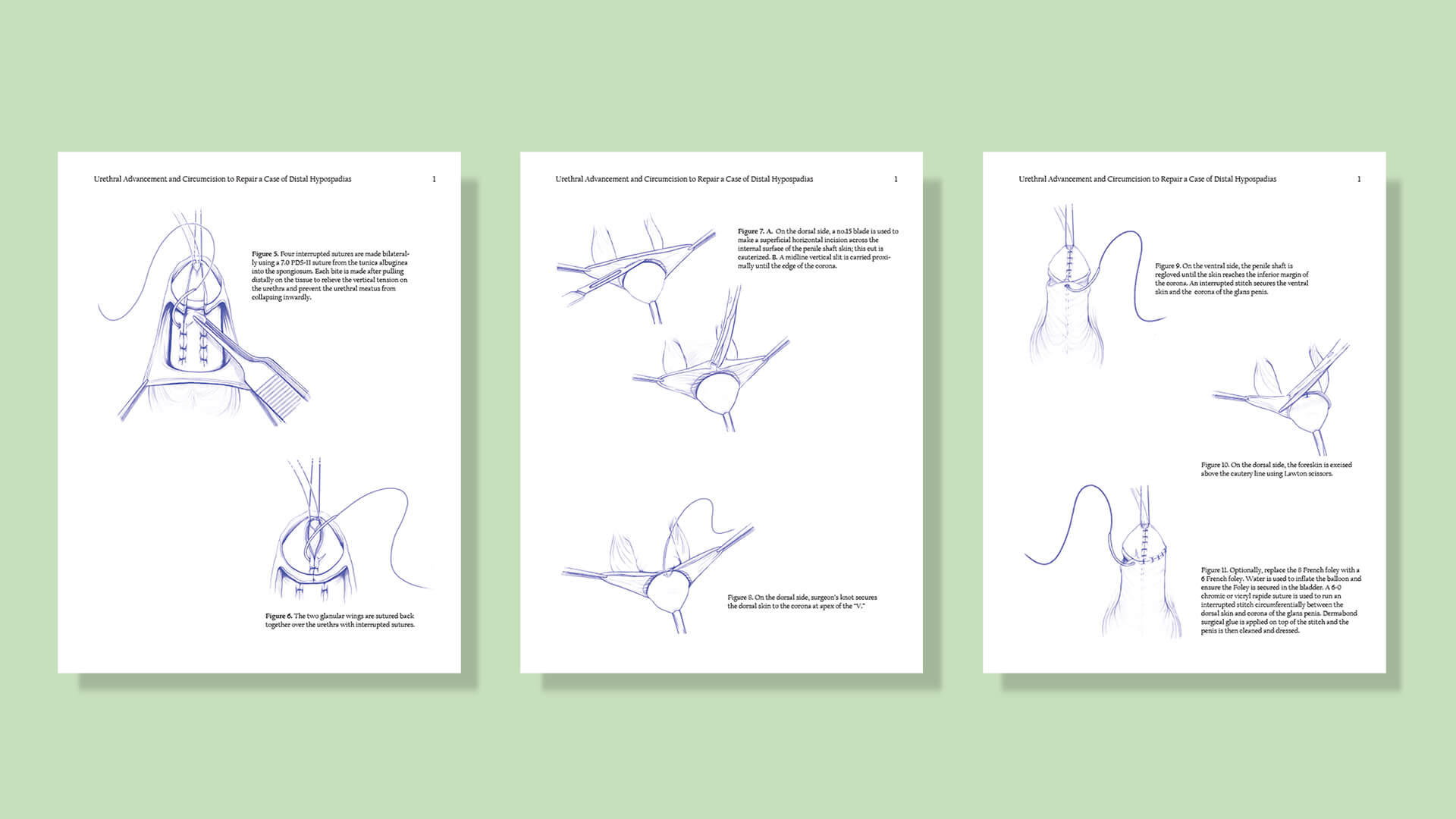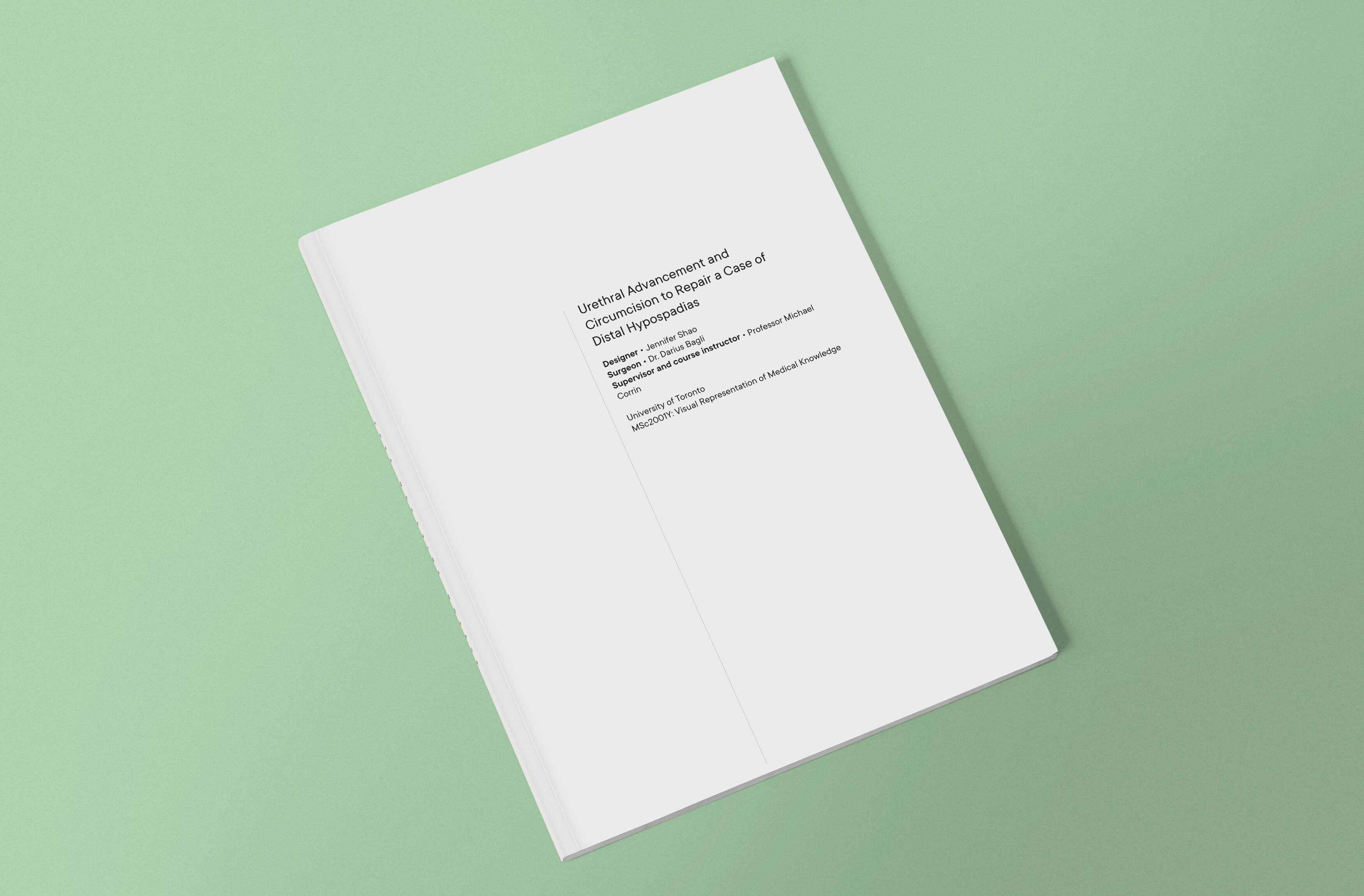
Sequential Surgical Illustration
Urethral Advancement and Circumcision to Repair a
Case of Distal Hypospadias
May 2020
Overview
A sequential surgical guide that highlights the pertinent steps of a pediatric urogenital procedure. The final product is inked (digitally) in black and white.
Supervisor
Michael Corrin, Associate Professor, Teaching Stream & Associate Director of the MScBMC Graduate Program at the University of Toronto
Content Advisor
Dr. Darius Bagli, Paediatric Urologist, MDCM, FRCSC, FAAAP, FACS, Professor in the University of Toronto's Department of Surgery
Location
University of Toronto Missisauga
The Hospital for Sick Children (SickKids)
Audience
Surgical residents
Roles and Responsibilities
Researcher, illustrator. Partnered with Willow Yang for in-person surgical observation.
Tools
Illustrator, Procreate
Challenges
Neither of us are surgeons (obviously), so the biggest challenge was determining what novel information a surgical resident would need to know to complete the procedure. What's common in this field (e.g. a type of stitch) and what is specific to this procedure? This was especially difficult because we could only watch the procedure once and there is a uniqueness to each surgery.
Observation
Surgery waits for no one—we're lucky a surgeon was nice enough to let us observe! We
wake up at 4am to get to the hospital by 7am (neither of us
are
morning risers).
We divide our tasks to optimize our observation window:
Willow
sketches and I communicate with the surgeon and surgical nurse to record the tools,
anatomy involved, as well as notes about each step in the procedure.
Willow’s sketches of patient position, tools, and excisions form the foundation of
subsequent illustrations.
Research + Filling in Gaps
Immediately after observing the surgery, we meet to compare notes, sketches, and
construct a written description of the procedure. The purpose is to analyze for the
gaps in our understanding. I
also draw thumbnails to target gaps in
my spatial understanding, and how different instruments were held.
In reviewing the literature, it's clear that there are several ways to fix a distal
hypospadias and
perform a circumcision, but none are exactly like the technique that Dr. Bagli
employed.
To solve this issue, we pool together our research and our observation notes, and
refine
the
steps of the work. We create key questions to ask Dr.
Bagli
and the surgical resident to fill
in these gaps (they're incredibly intimidating and incredibly generous!).
Initial copy and thumbnails of the urethral advancement and circumcision, a combination of our observation notes and the literature.
Iterate, Iterate, Iterate...
Every week, we meet with Professor Corrin to critique our illustrations. We learn from each other, our peers, and resolve our misunderstandings of the anatomy and steps, reworking several drafts. It gets better after each iteration, but not without a lot of work!
Design Comprehensive
We each reach a sufficiently viable product and share one of the copies with Dr. Bagli to confirm the accuracy of our illustrations. I'm not sure how he had the time but his annotations and mark-ups clarify our understanding once more.
Outcome
Here’s the final illustration of the procedure. Lacking the traditional studio tools due to the ongoing pandemic, I inked it in Procreate.
Reflection
This was a frustrating yet incredibly rewarding project to be part of. Adopting a consistent and rapid-iterative approach to developing drafts helped to identify and resolve comprehensive problems in the beginning.
Acknowledgements
You can achieve spectacular goals with a great mentor and collaborator. Immense gratitude to Professor Corrin, as always, for his superb guidance; Dr. Bagli for his patience in answering our inane emails; and of course, Willow Yang, a talented designer.
Works Consulted
Here is my bibliography (PDF). It includes text and anything else I found constructive in my research. Feel to reach out about any resources and if you have any questions!








